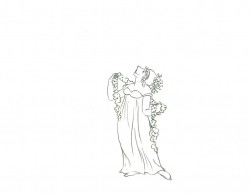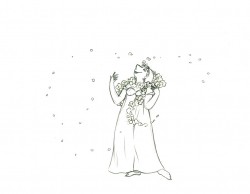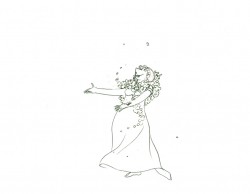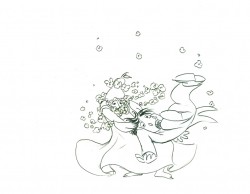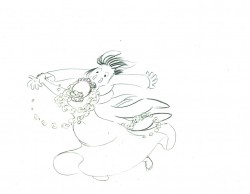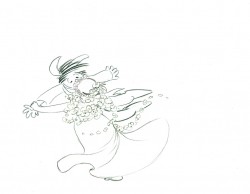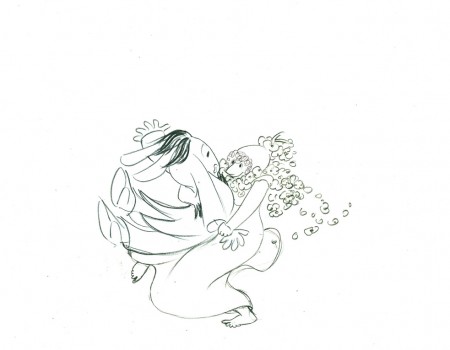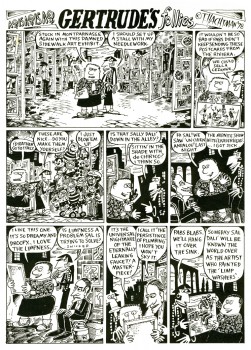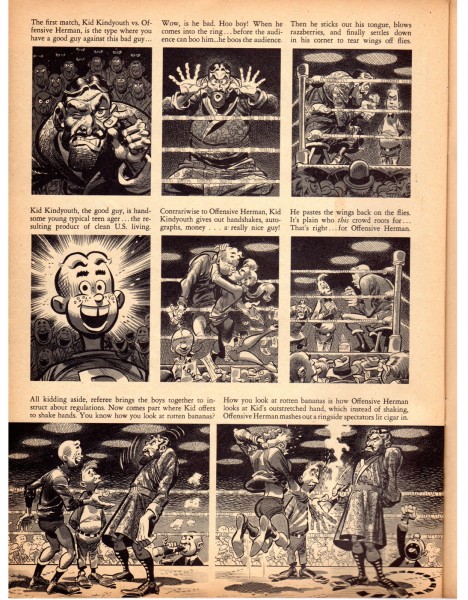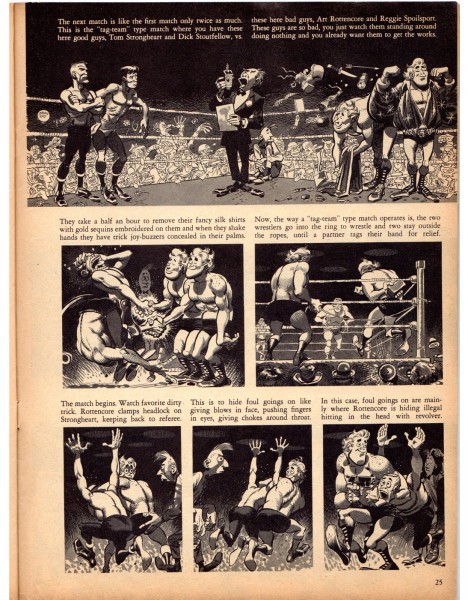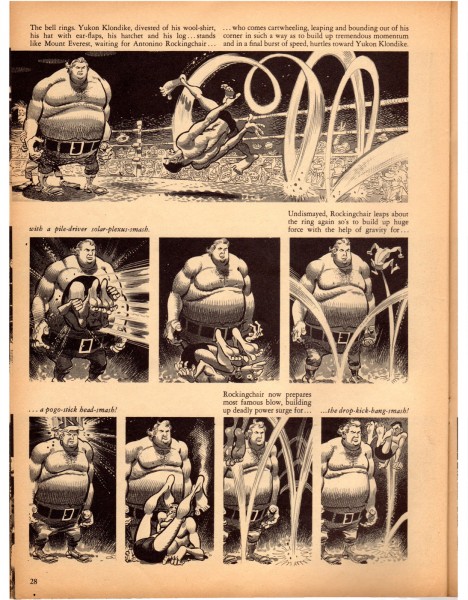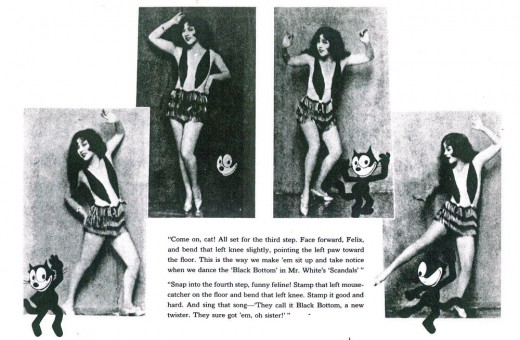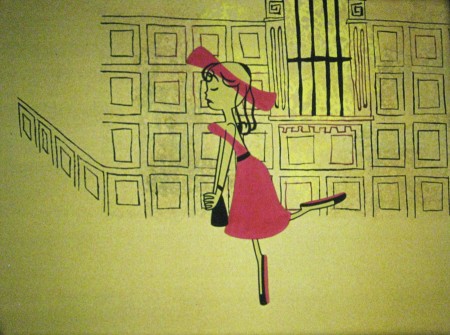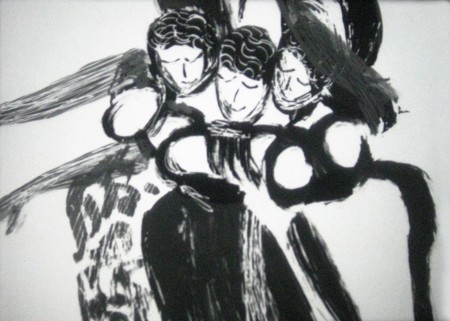Monthly ArchiveOctober 2011
Bill Peckmann &Comic Art &Illustration 21 Oct 2011 05:49 am
Harvey and Jack – Part 3
Before getting into today’s post, I received some sad news last night. Hal Silvermintz, the designer and force in NY animation during the the 60s and 70s, passed away at his home in Florida. Hal was key to Stars and Stripes Productions Forever and Perpetual Motion Pictures. I’ll have more about him in tomorrow’s post, but I wanted to get the word out there.
.
- Today, we continue our focus on the collaboration between Harvey Kurtzman and Jack Davis. Individually, each is a brilliant artist, together , they create even more brilliant work. Bill Peckmann continues this series sending me some excellent examples; for that contribution I’m most grateful.
Bill also supplies the captions posted under the images.
 1
1Even though this is not a number one issue, this second (and last) issue of
TRUMP magazine is a kind of a first. Harvey and Jack teamed up to do stories
in color for the first time in a slick magazine. Later on Jack did help Harvey in
the “assembly line” process of early LITTLE ANNIE FANNY stories in PLAYBOY.
 2
2This spoof of the movie GIANT might be one of their best satires
because of the color.
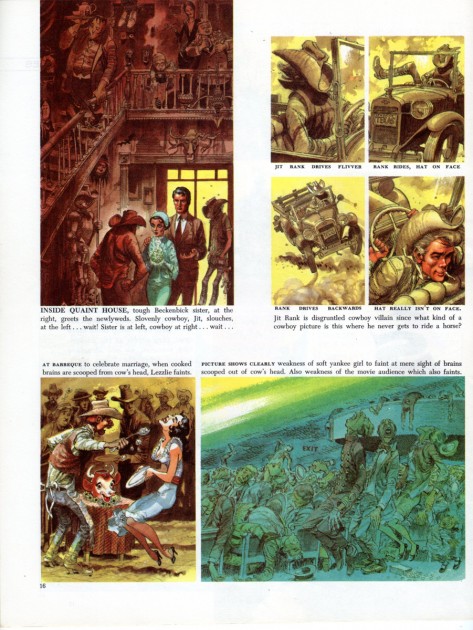 3
3 4
4 5
5 6
6This feature in TRUMP # 2 was titled “Sporty Illustrations”
a send up of SPORTS ILLUSTRATED magazine,
Jack did four pages of this piece.
 7
7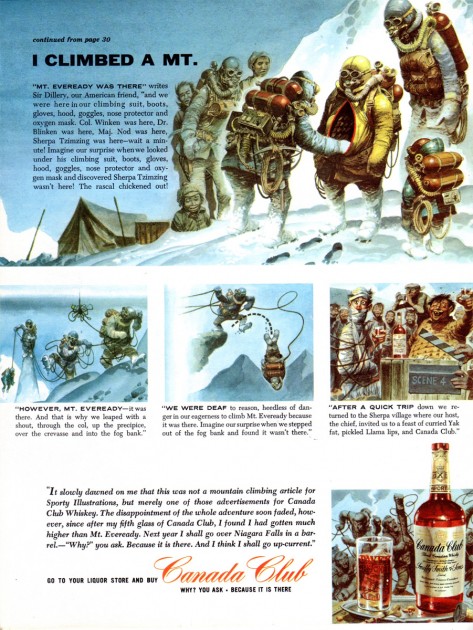 8
8 9
9 10
10Here’s is the cover of HUMBUG # 1.
 11
11
Harvey’s new ventures usually include a personal “heartfelt” intro.
Since HUMBUG was self financed by himself and his crew, I thought
it would be appropriate to include these here.
The caricatures are the icing on the cake.
 12
12 13
13Elia Kazan’s 1956 BABY DOLL gets the Harvey and Jack treatment.
Harvey has fun again with panel borders
like he did in the first MAD comic book story.
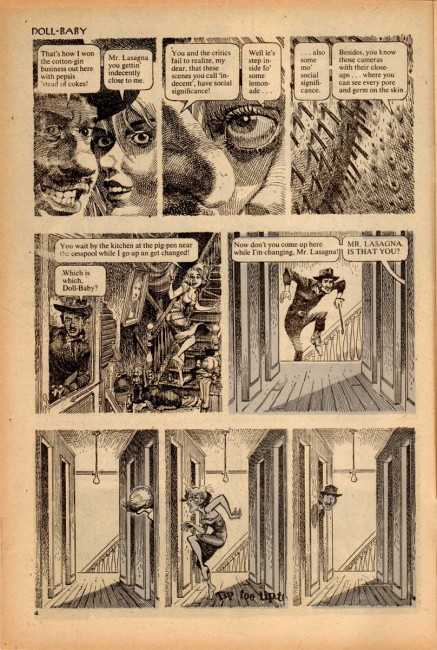 14
14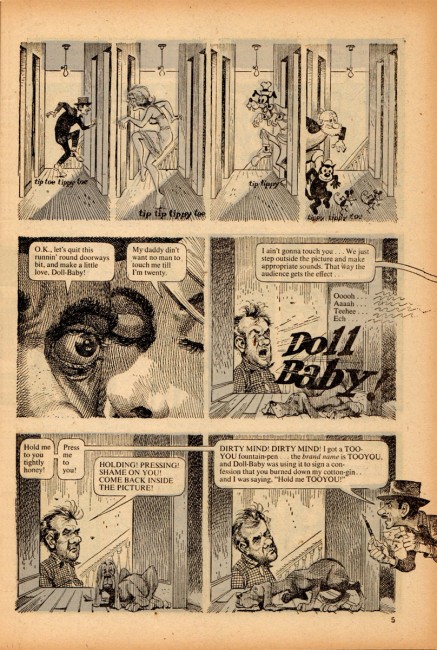 15
15 16
16 17
17The next four pages contain some of Jack’s finest pen work. Eye candy!
 18
18 19
19 20
20If anyone wants to see more of HUMBUG, the recent
beautifully crafted reprint book is available on Amazon.
 21
21During the runs of early MAD, TRUMP and HUMBUG,
Sid Ceasar was to television what Harvey Kurtzman was to comic books.
Who better to put on the first issue of HELP!
 22
22It’s only one page but at least Harvey and Jack are still at it!
Books &Commentary 20 Oct 2011 07:23 am
Crafton’s BEFORE MICKEY
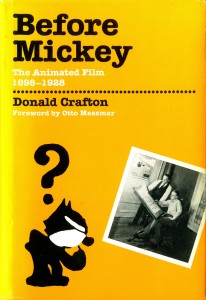 - I’ve been rereading some of the animation books that were released long before this blog existed. This gives me the opportunity of reviewing them fresh. Rereading them means, most probably, that I liked them enough in the first place that I wanted to read them again. That’s probably true, at least it is in the case of today’s book. This was the third time I’ve read Donald Crafton‘s brilliant work of animation history, Before Mickey.
- I’ve been rereading some of the animation books that were released long before this blog existed. This gives me the opportunity of reviewing them fresh. Rereading them means, most probably, that I liked them enough in the first place that I wanted to read them again. That’s probably true, at least it is in the case of today’s book. This was the third time I’ve read Donald Crafton‘s brilliant work of animation history, Before Mickey.
This book is one of those that has been THE source for many researchers once it arrived on bookshelves. It is, as its title states, a history of animation prior to the first Mickey Mouse cartoon, meaning the first recognized sound cartoon. As such it’s an invaluable work, and I do mean invaluable.
The subject matter for this book is a large one, and prior to this, no one had written extensively about silent film animation. Even after the book was first published in 1982 to today, there have been few others devoted to the subject of early animation.
- John Canemaker wrote two books: one about McCay and a second about Felix.
- There have been several about Disney’s work before the sound films, particularly Merritt & Kaufman‘s Walt in Wonderland: The Silent Films of Walt Disney and Timothy S. Susanin‘s Walt before Mickey: Disney’s Early Years, 1919-1928.
- Several have a wider scope, particularly Denis Gifford‘s scholarly tome, American Animated Films, the Silent Era, but even this book eliminates 2/3 of the world’s cinema. That’s pretty much it.
 The surprise is that the book pretty much got it right with this first one. In the writing, Crafton records the short histories of many significant filmmakers from Bray to Terry, McCay to Messmer, from Disney to Dyer, Cohl to Fleischer. He gives an account of many animators who enter learning; people such as Tytla, Culhane, Huemer, Nolan and Iwerks among many others pass through the book before they become the giants of the industry.
The surprise is that the book pretty much got it right with this first one. In the writing, Crafton records the short histories of many significant filmmakers from Bray to Terry, McCay to Messmer, from Disney to Dyer, Cohl to Fleischer. He gives an account of many animators who enter learning; people such as Tytla, Culhane, Huemer, Nolan and Iwerks among many others pass through the book before they become the giants of the industry.
The book is divided into numerous sections. At first there’s a focus on the various individuals that created the medium, people like Blackton, Cohl and McCay. Then we move to those who turned it into an industry, those like Bray and Fleischer and Terry.
Once all of the US studios are touched on, Crafton moves to Europe; we learn how the different countries such as Britain, France, Germany, Sweden and Russia established their industries and animators. I’m sorry Crafton didn’t really go into the work in Japan and China since both countries developed strong and thriving animation studios, but the book could only house so much.

One of many ads printed in the book.
Following this, Donald Crafton goes back to a theme which slyly entered in the book’s opening, the subject matter of the films. At first he recognizes that animation follows the comic strips of the day with a heavy focus on human characters, but somewhere in the early 1920′s characters became animal – animals that stood upright and acted like humans. This is probably precipitated by the arrival of Felix the Cat and the Sullivan sudios. With his  enormous success, there were a large number of imitators. From Terry to Disney, everyone found animated cats that were able to unscrew their tails and use them in a multitude of comic situations. Sullivan sued, and Terry’s cat went from being named Felix to Herman; Disney named his cat Julius. It is an important theme to Crafton, this concern whether a character is human or animal, and one can ultimately understand the need to categorize when one has to include so many wildly varying types of film.
enormous success, there were a large number of imitators. From Terry to Disney, everyone found animated cats that were able to unscrew their tails and use them in a multitude of comic situations. Sullivan sued, and Terry’s cat went from being named Felix to Herman; Disney named his cat Julius. It is an important theme to Crafton, this concern whether a character is human or animal, and one can ultimately understand the need to categorize when one has to include so many wildly varying types of film.
The book is an enormous work, and Donald Crafton has got it right. It’s invaluable; that’s the only word I can muster for it. The book is invaluable. It’s as informative on the third read as it was on the first, and there’s a reason that all of the books mentioned in the third paragraph refer back to this book. It’s a big subject and is handled with seeming ease. The book reads easily; the author keeps your interest. This book is a corner stone for an entire section of the animation history section.
.
If you’d like to see some silent animated films, I heartily recommend Tom Stathes‘ site where you’ll find a large number of films available.
.

.
.
.
.
A personal note. I had just finished reading this book, back when it came out, and was gifted with another copy from Bob Blechman. I’d done some favor for him, and the book was a small means of thanking me for it. I appreciated it, and I cherish the little Felix that Bob drew in the book for me.
.
.
Animation &Animation Artifacts &Tissa David 19 Oct 2011 05:58 am
Titania and Bottom – recap
Having revisited a number of Hubley films recently, I’ve grown more attached to some of the Tissa David works, and having spent a few hours with Tissa recently, I thought I should look again at her work on The Midsummer Night’s Dream, a film which has rarely been seen but is worth looking at.
- I’ve posted a number of pieces about Tissa David‘s work on The Midsummer Night’s Dream. (see them here.) This was a film she directed and animated with three other people: Kalman Kozelka photographed, xeroxed the cels and coordinated it, Ida Kozelka-Mocsary color styled it and did most of the painting, and Richard Fehsl did the Bg designs and animated many of those Bgs.
The film aired on the BBC in 1983 and was released on VHS by Goodtimes Video
I’d previously posted a couple of the cels from a scene, and here I’m posting all the drawings. I do think the film looks better in pencil test, but then I’m partial to Tissa’s beautiful drawing style. Here, again, are those cels:



Titania catches Bottom in her arms.
Three cels from a sequence.
And Here are those drawings:
 21
21
Titania Dances with Bottom
I took a guess at the timing of this putting the
action on three’s and adding two short holds.
All drawings from this scene (both posts) are included in the QT.
Click left side of the black bar to play.
Right side to watch single frame.
Daily post 18 Oct 2011 05:47 am
The Grounded House
- Yesterday, I received the following comment from “Doug”:
- “Michael – are you aware of and if so, would you opine on Bill Plympton’s “restoration†of Winsor McCay’s Flying House?”
The short answer is, yes I am aware of this “restoration,” and on several blogs I curtly gave my opinion of this project. Unfortunately, I have not been kind about it. Bill, even called once and asked me to be in a documentary about the film and tell the camera what I thought about it. I declined, ultimately. Especially, after I saw the finished product and compared it to the original.
So, let me go into it a bit. The longer version.
The first thing that caught my eye is that it no longer is a “Winsor McCay Film;” it’s a “Winsor McCay – Bill Plympton Film.” The restorer gets equal credit with the filmmaker. Cheeky.
The balloons of McCay’s film reflect his comic strip sensibilities; this is the natural way for him to create a dialogue. Bill Plympton employed two excellent actors, Matthew Modine and Patricia Clarkson to voice the balloons which were eliminated in the “new” version of the film. They’re terrific actors, but I prefer seeing those balloons, especially since all action freezes when you’re supposed to be reading. Now with the new voices, it feels as if the screen dies whenever they speak. It doesn’t work visually, anymore.
.

The ugly balloons
We went through a long period where colorizing films was often well discussed. The comments were overwhelmingly negative just prior to CITIZEN KANE getting a new set of garish colors ingrained over the beautiful black and white cinematography of Greg Toland. Fortunately, that hasn’t happened – as yet.
Animation enthusiasts have long cried out over the colorization of the black and white WB and Popeye cartoons. To this day, Cartoon Network is showing the colorized Fleischer Popeye cartoons instead of the beautiful B&W ones. These were done the same way Plympton’s people did their handiwork. Frames were traced off and painted and put back into the whole. Along the way timing and shuffling of the artwork was done so that the new is not the same as the old.
In The Flying House, if you look at the scene of the engine room where the male of the house operates the giant propeller. The machinery acts in a very funny way in the McCay version of the film; in the Plympton version the timing is completely different and wholly unfunny. They made the task easier by only doing a portion of the job and cycling it. McCay’s scene is much longer, and the timing is constantly changing.
One can see this scene, in this late McCay animation, as an answer to what has become of the medium he originally designed, if not invented. The factory made animated films had turned to labor saving, cost-cutting devices to rush production. Cycles were a big part of the silent animated films. Paul Terry’s studio reworked cycles ad infinitum to hurry their work lode. McCay uses cycles but gives many different variations on the cycle, and shows animators how to do it. He turns the cycle into a gag. Unfortunately, the newer version of this film misses the gag entirely and obviously missed the insider’s reference that McCay was making. I’m sure animators of the day didn’t miss it. The “restoration” is a bust for this scene, alone. .
If you look closely at the images in the new version, you’ll see that there are some small changes going on in the artwork. Things have been tidied up a bit by the Plympton crew to the detriment of the McCay artists. Something is lost here; McCay’s hand.
.
The colors chosen by Bill Plympton aren’t bad – even respectful, but my preference is to see the colors chosen by McCay, in this case B&W with grays. I’m more interested in what McCay thought in making this film than I am in Plympton’s thinking.
.
In fact, the most egregious problem with “modernizing” McCay’s work is that you’re undoing decisions McCay made years ago. What if I thought that Plympton’s feature IDIOTS AND ANGELS was too morose. The colors are grayed out, and it’s all just too dark. So if I were to take a copy of his film and add brilliant colors, a laugh track to make sure people can recognize where the funny parts are, and some more pop songs throughout the film. Would that make the film better, or would I be desecrating the film? The answer is obvious, and it goes for McCay’s film as well. I don’t have the right to second guess Bill Plympton’s decisions on his film; he doesn’t the have the right to second guess McCay’s decisions – especially since McCay’s original film is considered one of the animation treasures.
.

was square has now become more of a rectangular shape.
The screen proportions have changed, and distortion has entered.
There are laws protecting certain preserved buildings in New York City, and there should also be laws protecting rare films. This is one that should have been protected.
Animation &Commentary &Frame Grabs 17 Oct 2011 06:57 am
Lantz and Me – recap
In scouting around the internet, I came back to Thad Komorwoski ‘s great piece on Ace In The Hole. It was nice to see these drawings again, and it pushed me back to my own post on the film. I thought I’d bring some attention to that by reposting it, today.
- Like many others, reading the Roger Armstrong reminiscence on Mike Barrier‘s site really got me into the Walter Lantz mood.
 I first went back to Mike’s book, The Hollywood Cartoon, and read what info he had about Lantz. After a bit of reading there, I went to look at some of the old Woody Woodpecker shows – I have that collection from Columbia House that came out years ago which includes about three half hour shows per DVD, 10 DVDs, and some beautiful prints.
I first went back to Mike’s book, The Hollywood Cartoon, and read what info he had about Lantz. After a bit of reading there, I went to look at some of the old Woody Woodpecker shows – I have that collection from Columbia House that came out years ago which includes about three half hour shows per DVD, 10 DVDs, and some beautiful prints.
Then I reread one of my all time favorite animation books, The Walter Lantz Story by Joe Adamson. This isn’t a terribly large book, but it sure is packed with a lot of first-rate information.
As an owner of my own animation company I get a real charge in reading about the ups and downs Lantz had to go through, financially, to keep his company afloat. In one chapter, Universal dropped him, and he rebuilt, financing a couple of films with the help of a few animators. Then he went back to Univeral and sold the films to them with a brand new deal. It took enormous entrepreneurial strength believing in what he did and going forward with everything on the line.
It’s a great book, and Joe Adamson should be proud of the effort. I also encourage you all to read it. (If only there were a similar book about Paul Terry.)
I got to meet Lantz a couple of times in his late years. One was at Grim Natwick’s 100th birthday. Too bad Walter didn’t sit for the group photo; it would’ve added something to the collected group of animation veterans.

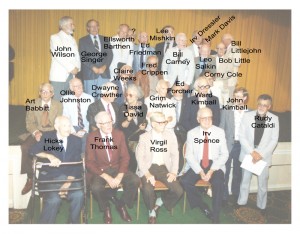
The group photo with ID’s alongside this picture.
(Click to enlarge.)
Another event in LA was the Walter Lantz Conference on Animation in which a number of speakers spoke and films were screened. Lantz was everywhere in those few days. It was great.
However, my most memorable meeting came thanks to John Canemaker. John had interviewed and met with Lantz several times during a group of meetings Walter and Gracie were having in New York in the 70s. There was, if I remember correctly, a special screening of their films at which they would talk. Since I was going there, John asked if I wanted to meet up with him and ride to the event with Walter and Gracie in their limousine. It was a treat to meet them one-on-one and to have a chance to share a few words. I have to say he was one of the most kind people I’ve run across, who gave me plenty of chance to talk. It was one of those standout moments in my life.
.
 - Back in the day, when I was just a teenager, there was very little in the way of media, as there is today. If you were desperate to become an animator, there weren’t many directions to turn. You had what was on the four or five tv channels that existed and there was the library.
- Back in the day, when I was just a teenager, there was very little in the way of media, as there is today. If you were desperate to become an animator, there weren’t many directions to turn. You had what was on the four or five tv channels that existed and there was the library..
TV offered the Walt Disney show, which two out of four Wednesdays (which eventually moved to Sundays) each month, they’d touch on “Fantasyland”, and you could watch some Disney cartoons – usually Donald and Chip &
 Dale, or there was the Woody Woodpecker show, during which Walter Lantz would talk for four or five minutes about some aspect of animation.
Dale, or there was the Woody Woodpecker show, during which Walter Lantz would talk for four or five minutes about some aspect of animation.
For all those other hours of the day when you wanted animation you had to make do with what you could create for yourself.
At the age of 11, I took a part time job for a pharmacist delivering drugs to his clientele.
I lived off the tips that were offered, and I saved my money until I had enough to buy a used movie camera.
 The trek into downtown Manhattan was a big one for an eleven year old child, but I loved it. I went by myself to Peerless camera store near Grand Central Station. (It later merged with Willoughby to become Peerless-Willoughby; then it went back to just being Willoughby.)
The trek into downtown Manhattan was a big one for an eleven year old child, but I loved it. I went by myself to Peerless camera store near Grand Central Station. (It later merged with Willoughby to become Peerless-Willoughby; then it went back to just being Willoughby.)
That store, I quickly learned had a large section devoted to films for the 8mm crowd. Lots of Laurel and Hardy, Our Gang and Woody Woodpecker cartoons. Once I had the camera, I saved for a cheap projector and eventually bought some 8mm cartoons.
.

.
Independence. Now, I didn’t have to wait to see them on TV, I could project them myself whenever I wanted. Even better, I jiggered the projector to maneuver the framing device which allowed me to see one frame of the film
 at a time, so that I could advance the frames one at a time. I could study animation.
at a time, so that I could advance the frames one at a time. I could study animation.
.
.
I know, I know. I’m describing the stone ages. Today all you have to do is get the DVD (which is incredibly cheap compared to the cost of those old 8mm films) and watch it one frame at a time or any other way you want. And every film is available. If you don’t have it just join Netflix and rent it. Your library is always open and growing.


 Yes, Peerless had a large 8mm film division, so you could buy the latest Castle film edition of some Woody Woodpecker cartoon, or you could find many of Ub Iwerks’ films. I had a collection of these. Ub Iwerks was my guy. Everything I’d read about him (in the few books available) got me excited about animation. Actually, Jack and the Beanstalk and Sinbad the Sailor were the first films I’d bought and watch endlessly over and over frame by frame.
Yes, Peerless had a large 8mm film division, so you could buy the latest Castle film edition of some Woody Woodpecker cartoon, or you could find many of Ub Iwerks’ films. I had a collection of these. Ub Iwerks was my guy. Everything I’d read about him (in the few books available) got me excited about animation. Actually, Jack and the Beanstalk and Sinbad the Sailor were the first films I’d bought and watch endlessly over and over frame by frame.
In short time, I knew every frame of Jack and the Beanstalk backwards and forwards. I didn’t realize that it was Grim Natwick who had animated (and directed the animation) on a good part of the film. Meeting Natwick years later, I think I surprised him by saying as much. He just moved on to another subject, appropriately enough.
.
.
In some very real way, I learned animation from that film and several others that I bought in those primitive years of my career. Before I knew principles of drawing, I’d been able to figure out principles of animation. I’d had the Preston Blair book, and I had the Tips on Animation from the Disneyland Corner. I just measured what they said about basic rules and watched – frame by frame – how these rules were executed by the Iwerks’ animators. The rest was up to me to figure out, and I was able to do that.


 Eventually I bought a Woody Woodpecker cartoon. I was reluctant because so many of them were the very limited films done in the early 60′s – Ma and Pa Beary etc. It took a while to figure out that Ace in the Hole was a wartime movie and the animation would be a bit better. It was also the Woody that I liked – just a bit crazy. So I sprang for it and swallowed that film’s every frame for years.
Eventually I bought a Woody Woodpecker cartoon. I was reluctant because so many of them were the very limited films done in the early 60′s – Ma and Pa Beary etc. It took a while to figure out that Ace in the Hole was a wartime movie and the animation would be a bit better. It was also the Woody that I liked – just a bit crazy. So I sprang for it and swallowed that film’s every frame for years.
 I’m not sure who George Dane is, (he seems to have spent years at Lantz before working years at H&B and Filmation) but I studied and analyzed his animation on this film closely and carefully.
I’m not sure who George Dane is, (he seems to have spent years at Lantz before working years at H&B and Filmation) but I studied and analyzed his animation on this film closely and carefully.
The work reminded me of some of the animation done for Columbia in the early 40′s. It had that same mushiness while at the same time not breaking any of the rules. Regardless, he knew what he was doing, and I had a lot to learn from him. And I did.


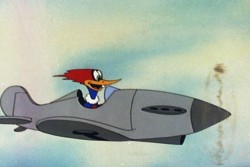 Things keep changing, media keeps growing. I’m glad I had to fight to get to see any of those old 8mm shorts back in the early years. When I bought my first vhs copy of a Disney feature, it took a while to grasp the fact that I could see every frame of it whenever I wanted. In bygone years, I could only see the rejects that TV didn’t want. I wanted to study Tytla and Thomas and Natwick and Kahl. Instead, I studied George Dane. And you know what, it was pretty damn OK. I learned enough that I knew a lot when I started in the business.
Things keep changing, media keeps growing. I’m glad I had to fight to get to see any of those old 8mm shorts back in the early years. When I bought my first vhs copy of a Disney feature, it took a while to grasp the fact that I could see every frame of it whenever I wanted. In bygone years, I could only see the rejects that TV didn’t want. I wanted to study Tytla and Thomas and Natwick and Kahl. Instead, I studied George Dane. And you know what, it was pretty damn OK. I learned enough that I knew a lot when I started in the business.

I just jumped in and was animating for John Hubley within days of getting that first job. (It helps that it was an open studio like Hubley’s where the individual artist could do anything, as long as he kept his head above water. In most studios there’s a rigidity that keeps you in your classified job.) In fact by then, I was more interested in Art Direction and Direction than I was in animation, but that’s another post.
If you want to learn from the masters, just pop in a DVD and watch it frame-by-frame. If you don’t get a charge out of it, you might begin to wonder if you’re really in the right business. After all these years, I still get the thrill, and I imagine I always will – even from watching Ace in the Hole AGAIN.

Animation &Independent Animation &SpornFilms &T.Hachtman 16 Oct 2011 06:29 am
Pabs’ First Burger
With the opening of the Gertrude show in Washington D.C. at the National Portrait Gallery, I thought it worth celebrating our relationship with Tom Hachtman, the cartoonist who has developed the strip Gertrude and Alice and who has some pieces in this D.C. exhibit. Hence, I’m re-posting the tale of our animated journey.
- Back in the late ’70s, there was a local newspaper that competed with the Village Voice for the alternative audience. The Soho News was smaller and thinner, but had its own treasures. Some good writing and listings, and many excellent alternative comic strips. (Bill Plympton had a weekly strip in this paper before he started animating.)
I fell in love with one comic strip called Gertrude’s Follies to the point where I waited  each week for the new issue and the new strip to hit to market. It was about Gertrude Stein and Alice B. Toklas and all the crazies that came into their lives – particularly Picasso, Hemingway and other iconic art types. It didn’t matter that Matisse and Capote didn’t meet; they were both available for the strip – as was everyone else.
each week for the new issue and the new strip to hit to market. It was about Gertrude Stein and Alice B. Toklas and all the crazies that came into their lives – particularly Picasso, Hemingway and other iconic art types. It didn’t matter that Matisse and Capote didn’t meet; they were both available for the strip – as was everyone else.
Finally, after enjoying it for so long, I decided to locate the cartoonist behind it, and see whether he was interested in developing a storyboard and script for a feature. Maybe we could get some low-budget financing.
Tom Hachtman was the cartoonist, and he was a brilliant artist. His wife, Joey Epstein, was another fine artist. The two entered my life at this point, and some interesting things developed.
Gertrude’s Follies was an ongoing project. Tom worked with Maxine Fisher, who has been my writing partner through all the years of my studio. The two of them developed a couple of themes from the mass of strips that had been done and started to weave a storyboard. Tom left 4 or 5 panels of each 6 panel page empty, and I constructed and reconstructed story around them. Sometimes I would draw more material, sometimes I would take some away. It was real fun.
The Soho News folded, and no one really picked up the strip. It ran for a short time in The Advocate. Tom was able to publish a collected book (see the cover above.) You can still locate a rare copy on line.
Some newer, color copies of the strip can be found on line here.
Tom also does some political cartoons for the site here.
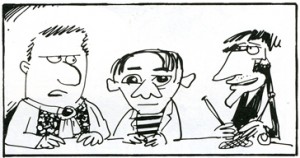 The movie never went into production. I couldn’t raise the funds – my inexperience. We did make one short segment – a two minute piece that was the most hilarious strip. Sheldon Cohen, an animator I met at the Ottawa 76 festival, came to NY when I offered him a job on Raggedy Ann. Sheldon, ultimately, did a number of films for the National Film Board which you can watch on-line if you click on his name.
The movie never went into production. I couldn’t raise the funds – my inexperience. We did make one short segment – a two minute piece that was the most hilarious strip. Sheldon Cohen, an animator I met at the Ottawa 76 festival, came to NY when I offered him a job on Raggedy Ann. Sheldon, ultimately, did a number of films for the National Film Board which you can watch on-line if you click on his name.
Sheldon animated this particularly funny strip. It took a while for him to animate it, and by the time he was finished, the feature had died and I had lost some interest. Years later I inked and painted it and had it shot. The short piece was never finished, though I still think about doing that.
Tom also recently gave me a funny strip about Pablo Picasso sculpture for which I’ve finished a storyboard and animatic. Hopefully, I’ll get the energy to animate it.
Aside from Gertrude, both Tom & Joey worked on a number of my films and still infrequently do. The two have painted many murals on the Jersey Coast, where they currently live. Tom has been a political cartoonist for the NY Daily News, has done lots of airbrush work for Bob Blechman when the Ink Tank was in operation. He also has done quite a few cartoons for The New Yorker magazine.
Here are a few of the strips to give you the flavor. Perhaps next week I’ll give a sample of our storyboard, comparing it with some of the actual strips. Enjoy.
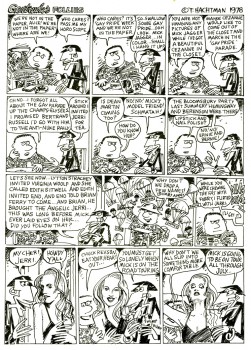 1
1  2
2
(Click on any image to enlarge so that you can read the strips.)
.
We did ultimately complete the short film, called “Pabs’ First Burger.”
Tom Hachtman did the backgrounds and Matthew Clinton did the animation.
Here’s a small QT view of that short:
Commentary 15 Oct 2011 06:44 am
Ramble, Ramble, Ramble
 - This past week was a busy week for animation in New York.
- This past week was a busy week for animation in New York.
It started on Monday with the AMPAS celebration of John Hubley‘s early work. It turned into quite an event with beautiful prints of many of the early UPA films which began with the military film, Flat Hatting and led to the brilliant masterwork, Rooty Toot Toot. Some commercials and a few of the early, brilliant films of the Faith & John collaboration, Adventures of an * and Tender Game. It was a sterling evening well attended by many of the key personae in New York’s animation scene.
On the following night, ASIFA East held a retrospective of the work of the late and great Independent animator, Karen Aqua. I was unable to attend this screening but was certainly down about it. Fortunately, there were two key reports describing the show: Linda Beck, the new President 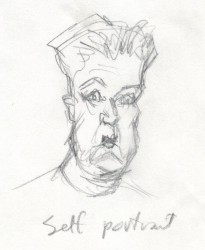 of ASIFA East, described the event on the organization’s blog, and Richard O’Connor of Ace and Son gave a good accounting on his blog.
of ASIFA East, described the event on the organization’s blog, and Richard O’Connor of Ace and Son gave a good accounting on his blog.
- Last night, Bill Plympton hosted a show at the Friar’s Club which featured the NY premiere of the new documentary by Alexia Anastasio, “Adventures in Plymptoons”, about him and his work.
Tonight at 7pm, at the Film Society of Lincoln Center Bill will doing a book signing of his “. . . big Rizzoli book, “Independently Animated: Bill Plympton”‘ He’ll be showing artwork from it and signing books and he’ll also be showing some of his new short films, plus a clip from Alexia Anastasio’s doc “Adventures in Plymptoons!”. All for free.
.BROOKLYN FILM FESTIVAL‘S kidsfilmfest will be screening films from their archives
WHEN: this Saturday, October 15th, from 10am-4pm.
WHERE: The Big Screen Plaza: 29th St between 6th and 7th Avenues in New York
WHO?: Kids of all ages!
WHAT: A selection of kid-friendly films, with in-plaza activities like face painting, balloon artists, popcorn, & more!
Join them for live action and animated films, food, face painters and more! Films are rated “G” for all ages.
The event is free of charge and open to the public.
_________________
 It should also be noted that the films of J.J. Sedelmaier will premiere at Big Screen Plaza on Tuesday, Oct 18th, 7pm. It’s free, outdoors and the atmosphere will be party time.
It should also be noted that the films of J.J. Sedelmaier will premiere at Big Screen Plaza on Tuesday, Oct 18th, 7pm. It’s free, outdoors and the atmosphere will be party time.
Some of the works to be screened include:
__ Saturday Night Live’s “Conspiracy Theory Rockâ€
__ Saturday Night Live’s “Titeyâ€
__ The Daily Show’s “Midterm Electionsâ€
__ Ambiguously Gay Duo: “Safety Tipsâ€
__ Ambiguously Gay Duo: “Ace and Gary’s Fan Clubâ€
__ Ambiguously Gay Duo: “Blow Hot, Blow”
and many others
.

- Didier Ghez has been editing a library’s worth of books featuring interviews with animation professionals. For the most part these are the raw materials historians have worked with in writing their histories. Just now in release is volume 11 of his series, Walt’s People. There are interviews included in this edition with:
John Culhane: I. Klein_________________C. Finch & L. Rosenkrantz: Eric Larson
John Culhane: John Hubley____________Robin Allan: Jules Engel
Darrell Van Citters: Ed Love____________Darrell Van Citters: Mike Lah
JB Kaufman: Frank Thomas____________John Culhane: John Hench
John Canemaker: Ward Kimball________Dave Smith: Ward Kimball
David Tietyen: George Bruns___________John Canemaker: Dale Oliver
John Canemaker: Iwao Takamoto______John Canemaker: Richard Williams
John Culhane: Daniel MacManus________John Canemaker: Glen Keane
Didier Ghez: Joe Hale__________________Jérémie Noyer: Mark Henn
Didier Ghez: Ed Catmull
_________and many others.
The introduction to this edition is by John Canemaker.
You’ll find the book Walt’s People – Vol. 11 at Amazon or Xlibris

- Sherm Cohen, on his blog, Cartoon Snap has posted a “How To Draw Cartoons” book by Bill Nolan. It originally came from the ASIFA Hollywood Animation Archives, but since all their links are broken, the re-post is welcome.
Bill Nolan, of course, was one of the premiere animators in the early days of animation. He claimed to have invented the cycle in animation. He worked for many studios doing Felix the Cat as well as Krazy Kat. He was one of the forces behind the Oswald the Rabbit series, working for Walter Lantz.
.
In celebration of Pixar’s 25th Anniversary, The New York Times is now taking questions for John Lasseter. In the next week or so Lasseter will answer questions left for him on the Times’ Artbeat blog. So if you want to ask Mr. Lasseter why there aren’t more 2D animated films coming out of Disney or what effect the death of Steve Jobs will have on Pixar’s work or why Cars 2 was such a dud, check in to the Times and leave your question.
.

.
- The National Gallery of Portraiture is featuring a show of art about Gertrude Stein. Called Seeing Gertrude Stein: Five Stories, the show features the work of over 100 artists. Tom Hachtman, whose comic strip, Gertrude and Alice. has been an obsession of mine, is one of those artists who contributed to this show. So if you’re in D.C. look for an original piece of art by Tom. (Tomorrow, I’ll post a video of a short short I did of one of Tom’s strips.)
Go here to see one of Tom’s contributions to the exhibit.
The show just opened on Friday and runs through Jan. 22, 2012.
Bill Peckmann &Comic Art &Illustration 14 Oct 2011 06:44 am
Harvey and Jack – Part 2
- This is the second part of the collaborative work of Harvey Kurtzman and
Jack Davis. It’s a series that Bill Peckmann graciously put together and contributed.
You can find part 1 here.
All comments under the images are Bill Peckmann’s.
 1
1In a little under three years since the first issue the comic book MAD
made its’ debut, we now have MAD # 24, July 1955, which was the
very first issue of MAD Magazine.
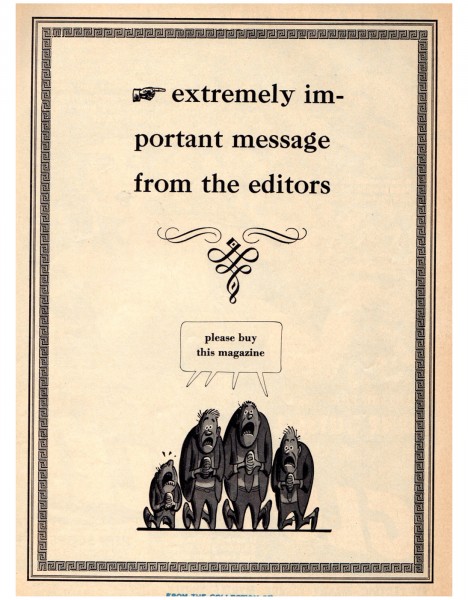 2
2
First page – Editor’s message.
 3
3
Harvey and Jack’s lead feature in the “Sports Dept.” of the
magazine is an animated tour de force.
The poses are side splitters, enjoy!
 13
13
Here is the cover of TRUMP magazine #1, Jan. 1957.
This was the first venture that Harvey had with High Hefner.
Unfortunately, TRUMP lasted only two issues. When this
Harvey and Jack spoof of a popular TV show came out, I’ll
always remember my older brother and his friends reading
this particular story with tears streaming down their faces,
it was that good!
Many thanks to Bill for his generosity in sharing this with us.
Books &John Canemaker 13 Oct 2011 05:50 am
Canemaker’s Felix Book
- I’ve recently been rereading the classics. No, I don’t mean Madame Bovary or Great Expectations; I mean animation’s classic books. Since this blog came into being a mere 6 years ago, I haven’t had the chance to review many of these books, which predate this blog, and I thought it time to share my guilty pleasure (reading) with you. So, I’m about to start reviewing some older books. In a sense, I’ve already done this by commenting on some of the books I never got up to reading – such as Culhane’s Talking Animals and Other People. I’m also going to review some books I’ve been rereading.
 First up is Felix, The Twisted Tale of the World’s Most Famous Cat by John Canemaker. This was Canemaker’s second book, following his Winsor McCay, His Life & Art. This is the second time through this book for me (lately I’ve been into reading about the earliest days of animation’s history), and it’s every bit as entertaining and informative as my first read.
First up is Felix, The Twisted Tale of the World’s Most Famous Cat by John Canemaker. This was Canemaker’s second book, following his Winsor McCay, His Life & Art. This is the second time through this book for me (lately I’ve been into reading about the earliest days of animation’s history), and it’s every bit as entertaining and informative as my first read.
You get both a history of Pat Sullivan, the entrepreneur who made a success of Felix and Otto Messmer, the animator who actually developed and brought Felix to life. The two stories run concurrently, and it’s obvious that Sullivan’s life was more dramatic. His story is a potboiler.
At the very start of his studio, Sullivan was incarcerated for nine months after being convicted of raping a 14 year old girl. Then he watches Messmer develop Felix into a superstar, capable of competing with any live-action celebrity. Riches flowed into the studio most of which ended up in Sullivan’s pockets.

Still from “Sure Locked Homes”
At the end of his life, when Felix films were on a decline, Sullivan’s wife had committed suicide (although her falling out a window to her death may have been accidental), and Sullivan’s health began to quickly deteriorate. “Whether caused by grief over Marjorie’s death, years of alcoholic abuse, or the tertiary stage of syphilis that finally affects the brain, or a combination of all three, it was obvious that Pat Sullivan was losing his mind.”
This is a page turner of a story.
.
 Threaded through it all is the steady and less interesting read of the shy animator who worked tirelessly to create, develop and produce the first character to exhibit a screen personality. Otto Messmer was the synthesis of most animators: work hard during the day in a mostly internal job, then go home to the mundane, middle class existence in the suburbs. It doesn’t make for a great read, but it made for great films.
Threaded through it all is the steady and less interesting read of the shy animator who worked tirelessly to create, develop and produce the first character to exhibit a screen personality. Otto Messmer was the synthesis of most animators: work hard during the day in a mostly internal job, then go home to the mundane, middle class existence in the suburbs. It doesn’t make for a great read, but it made for great films.
Canemaker tells both well, and it does have its effect. The book moves quickly and enjoyably.
It’s also something of a scrapbook in that there are plenty of images of Felix to show you what a complicated character Messmer had created. These cartoons were certainly more for adults than children. There was plenty of alcohol in the films and strips that flowed from the studio. War was a subject that was treated seriously. World War I had acutely affected many of the animators as well as the audience, and these films were particularly successful in the series.
For ten years the films reached a zenith of riches, and it was difficult for other animated films to break through the inner circle that Felix had developed. Margaret Winkler and her husband, Charles Mintz, distributed the Felix films, and when Sullivan sought greater fees he threatened to quit. Winkler then developed the young Walt Disney to serve as a backup plan should she lose the Felix films. She eventually did. Her husband ultimately forced Disney out as well, and that’s when the historic happened.
 Disney created Mickey Mouse in his first sound film, Steamboat Willie. All of Sullivan’s tardy attempts to issue post-recorded versions of Felix with sound were useless, and Felix became a has been. Sullivan died within four years, and Otto Messmer quietly spent the rest of his life hiding behind the Felix the Cat comic strips. It’s a sad story that John Canemaker reveals, and he gives the full version in this attractive book.
Disney created Mickey Mouse in his first sound film, Steamboat Willie. All of Sullivan’s tardy attempts to issue post-recorded versions of Felix with sound were useless, and Felix became a has been. Sullivan died within four years, and Otto Messmer quietly spent the rest of his life hiding behind the Felix the Cat comic strips. It’s a sad story that John Canemaker reveals, and he gives the full version in this attractive book.
I remember way back when, I think it was 1975, that I accompanied John Canemaker on a trip to Otto Messmer’s house and got to meet the man. The afternoon was quite pleasant, and I sat as an observer witnessing a casual and enjoyable Q&A with Mr. Messmer. I don’t remember much about the interview, but I do remember it as sunny and quite agreeable. I also remember my first reading of this book and seeing how John had turned that interview into something meatier than I remembered witnessing. He certainly interviewed Messmer many more times for the book (and the valuable documentary Otto Messmer and Felix the Cat, that he made in 1977.) It was my first time to see the fruit turned into facts, and it was an eye-opening experience.
Today I see the very informative book, and I also see the stylistic prose John adapted in the writing. It’s obvious he was completely invested in the subject and period and people of this book, and you can’t ask for much more from such an historic account. If this book isn’t part of your collection, it should be. At least, borrow it from the public library and read it.
Here‘s a nice interview from1991 with John and ira Gallen.
The documentary, Otto Messmer and Felix the Cat can be found on the DVD John Canemaker, Marching to a Different Toon.
Commentary &Hubley &Independent Animation &John Canemaker 12 Oct 2011 06:51 am
A Hubley Affair
 – The AMPAS program celebrating the early work of John Hubley went off wonderfully on Monday evening. The show started at 7pm, but prior to it there was a cocktail party for about 50 people. I have no idea who was invited to this, but it seemed to be Academy members who might have know the Hubleys as well as friends of the Hubley family. All four of the Hubley children were there including: Emily, her husband, Will Rosenthal, and their son, Max; Georgia and husband, Ira Kaplan (both part of the group Yo Lo Tengo); Ray Hubley, and Mark Hubley.
– The AMPAS program celebrating the early work of John Hubley went off wonderfully on Monday evening. The show started at 7pm, but prior to it there was a cocktail party for about 50 people. I have no idea who was invited to this, but it seemed to be Academy members who might have know the Hubleys as well as friends of the Hubley family. All four of the Hubley children were there including: Emily, her husband, Will Rosenthal, and their son, Max; Georgia and husband, Ira Kaplan (both part of the group Yo Lo Tengo); Ray Hubley, and Mark Hubley.
Also there, were Tissa David, Ed Smith, Candy Kugel, George Griffin, Vinnie Cafarelli, Lee Corey, Ruth Mane, John Canemaker (of course) with Joe Kennedy and others I probably have forgotten. Patrick Harrison and John Fahr ran and hosted the event for the Academy.
At the program I saw: Ray Kosarin, Linda Beck, Stephen MacQuignon, Richard O’Connor, Bill Plympton, and a hundred others that I recognized. The house was full.
As we entered the theater, prior to the start of the show, the soundtrack to Finian’s Rainbow was playing. Frank Sinatra, Ella Fitzgerald, Louis Armstrong, Ella Logan and Barry Fitzgerald.
The actual program began as all Academy events do, exactly on time. Patrick Harrison spoke for two minutes promising that next month the event would be a retrospective of the work of Saul Bass done in conjunction with MOMA. He then introduced John Canemaker, and we were off and running.
 John started with a PowerPoint presentation that showed the child, John Hubley, his surly uncle who became the model for Mr. Magoo; we saw some childhood drawings as well as a number of strong influences including classmate, Alvin Lustig, who designed the UPA logo. These were followed by some of the artwork Hubley did for Disney, which included a lot of Layouts and preliminary Background sketches. We saw art done during the War as well as preliminary art for many of the UPA films. John Canemaker featured a lot of Hubley in-house cartoon drawings peppered throughout the presentation.
John started with a PowerPoint presentation that showed the child, John Hubley, his surly uncle who became the model for Mr. Magoo; we saw some childhood drawings as well as a number of strong influences including classmate, Alvin Lustig, who designed the UPA logo. These were followed by some of the artwork Hubley did for Disney, which included a lot of Layouts and preliminary Background sketches. We saw art done during the War as well as preliminary art for many of the UPA films. John Canemaker featured a lot of Hubley in-house cartoon drawings peppered throughout the presentation.
This talk ultimately led to screening the movies.
Unfortunately, it started with the only 16mm print, a soft-focus soft color print of Brotherhood of Man. Somewhere a good print of this film exists, and I don’t know when it’ll be found – hopefully in my lifetime. It’s such an enormously powerful film, designed in a style which was borrowed from Saul Steinberg‘s work at the time.
Flat Hatting followed with a beautiful 35mm print. This is a brilliantly directed film showing how much good can be done with limited animation. It never felt limited, nor does it feel like an educational film for pilots. It’s very entertaining and drew a lot of laughs. Hubley had spent years directing mediocre films under Frank Tashlin at Columbia and a number of films for the military. This film shows how much he had learned as a director in such a short time.
The Magic Fluke is probably the best of the Fox and Crow series. This film has a great sense of design featuring that famous background by Jules Engel of the concert hall. I’m not sure Hubley was best cast as the director of a lightning quick comedy cartoon, but, for the most part, it works well. The print, again, was sterling.
Following this was a beautiful print of Ragtime Bear, the first Magoo cartoon. I hadn’t remembered how fluid the animation was; there was some beautiful distortion on Magoo later in the film. My guess is that it was a Pat Mathews scene. The film offers all of Magoo’s traits, but the character design is far away from what Pete Burness ended up directing.
The cr̬me de la creme of the evening: Rooty Toot Toot followed. What a beautiful, big 35mm print. What a stunner of a scene Рthat great Grim Natwick animation of Nelly Bly Рall blue Рcorkscrewing her hands and arms in the witness chair. Beautiful and funny. This is certainly one of the great films ever created.

An image photographed off the screen
There were a stash of commercials – both West and East coast – from the original Storyboard Prods. I own prints of all screened except for my favorite: a spot for Mennen aftershave. A rectangle of wrinkles around a pair of eyes. Mennen helps the lines smooth out, and the commercial uses abstraction for a very funny commercial. It was the first time I’d seen this commercial. They certainly were creative back then. Hubley repeated the use of abstraction in a number of other, later spots. I’m thinking particularly of one done in the early 70s for AT&T; Tissa David animated.
Beautiful reconstructed prints from MOMA included Adventures of an * and Tender Game. One was more beautiful than the other. Both are great films.
Voyage to Next was represented with a beautiful print, though I have to say, I never really liked this film. I had a lot to do with the making of it, and it really was a challenge and a great learning experience. About a third of the way through the production money ran out, and we had a film to get out with a small but great staff. There was a lot of stylistic improvisation done to try tokeep on a vbery tight budget, while being artful. It was a tough time for the Hubleys, and they stayed true to the film at hand.
Finally, the evening ended with a beautiful animatic called Facade. These were storyboards filmed (with slates) for a William Walton and Edith Sitwell score. John Canemaker actually located and got the rights to a version with Edith Sitwell, herself, actually doing the narration. Miraculously, it all seemed well in sync. This piece was done in 1964 as a sample for PBS., though the film was never completed. A real find for Canemaker straight from the Hubley collection. A film not seen by the public (and it hasn’t made its way into animation history books, either.)
All in all the show was so invigorating that the Academy had a hard time getting rid of us. People stayed and chatted in the lobby. It was a great event.
John and Joe, Heidi and I went out for dinner so we could chat about the program. I had a blast all night; it was one of the finest animation events I’d attended in many years.
Here are pictures I took during the evening.
.

 1
1
The cocktail party
 1
1
LtoR: John Canemaker, Georgia Hubley, Emily Hubley, Will Rosenthal
 2
2
LtoR: unknown, Patrick Harrison, Georgia Hubley, John Canemaker,
unknown in rear, Emily Hubley, Will Rosenthal
 3
3
LtoR: me, John Canemaker, Patrick Harrison
 4
4
LtoR: Emily Hubley, George Griffin, Vinnie Cafarelli,
Candy Kugel, John Canemaker
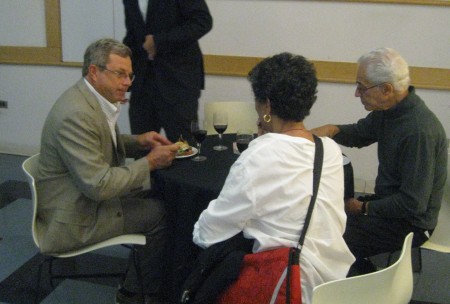 5
5
LtoR: Mark Hubley, Candy Kugel, Vinnie Cafarelli
 6
6
LtoR: Ed Smith, Vinnie Cafarelli
 7
7
LtoR: Vinnie Cafarelli, Tissa David, Lee Corey, Ed Smith
 8
8
LtoR: Vinnie Cafarelli, Ruth Mane, Tissa David
Lee Corey (partially hidden), Ed Smith
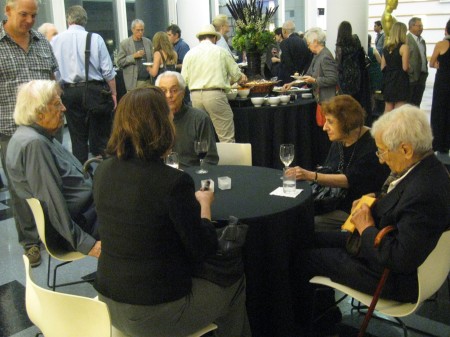 9
9
at table LtoR: Ed Smith, Heidi Stallings, Vinnie Cafarelli,
Ruth Manne, Tissa David
in rear, standing with winde glass: George Griffin w/Jeff Scher and wife, Bonnie.
 10
10
The three Hubley Oscars for (LtoR): Moonbird,
The Hole, The Tijuana Brass Double Feature.
 11
11
Audience front row (RtoL):
John Canemaker, Joe Kennedy, my empty seat,
Heidi Stallings, Tissa David, Ruth Mane
2nd Row, over empty seat: Stephen MacQuignon
3rd row (RtoL): Ed Smith, Richard O’Connor
 12
12
LtoR:Tissa David, Heidi Stallings, Joe Kennedy, John Canemaker
 13
13
Patrick Harrison giving thanks and introducing John Canemaker.
 14
14
John Canemaker giving PowerPoint presentation
The following images were photograped during the PowerPoint
presentation or during the films. Consequently, they often soft focus.
With apologies.
.
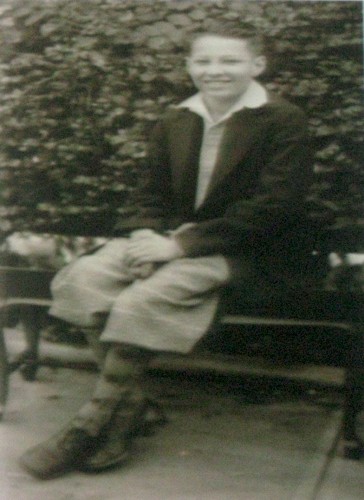 15
15A very young John Hubley
 16
16
An early John Hubley painting
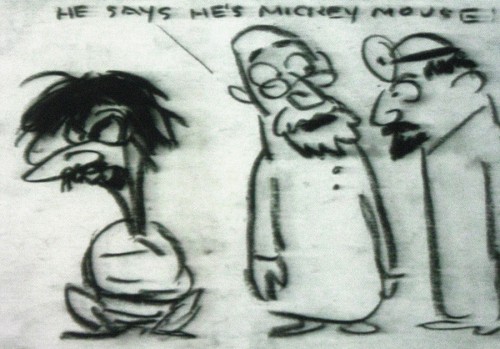 17
17
A gag cartoon from Hubley. Self portrait in straight-jacket.
Images from Facade follow:
 1
1
The animatic was done in 1964.
 2
2
Stylistically it feels like:
Moonbird, The Hole and The Hat crushed into one.
 5
5
The Hat for this animated duck-like character
Toward the end of the film there was one extremely long vertical pan.
It was an oil painting done by John, beautiful in its simplicity, perfectly
planned to fill a good 45 secs to a minute of screen time and yet it
was so compositionally correct and glosiously layed out.
All I can say is that I am so pleased to have had the opportunity to have
worked with John & Faith Hubley; it was all that it could have been and more.
One of the high spots of my life.
